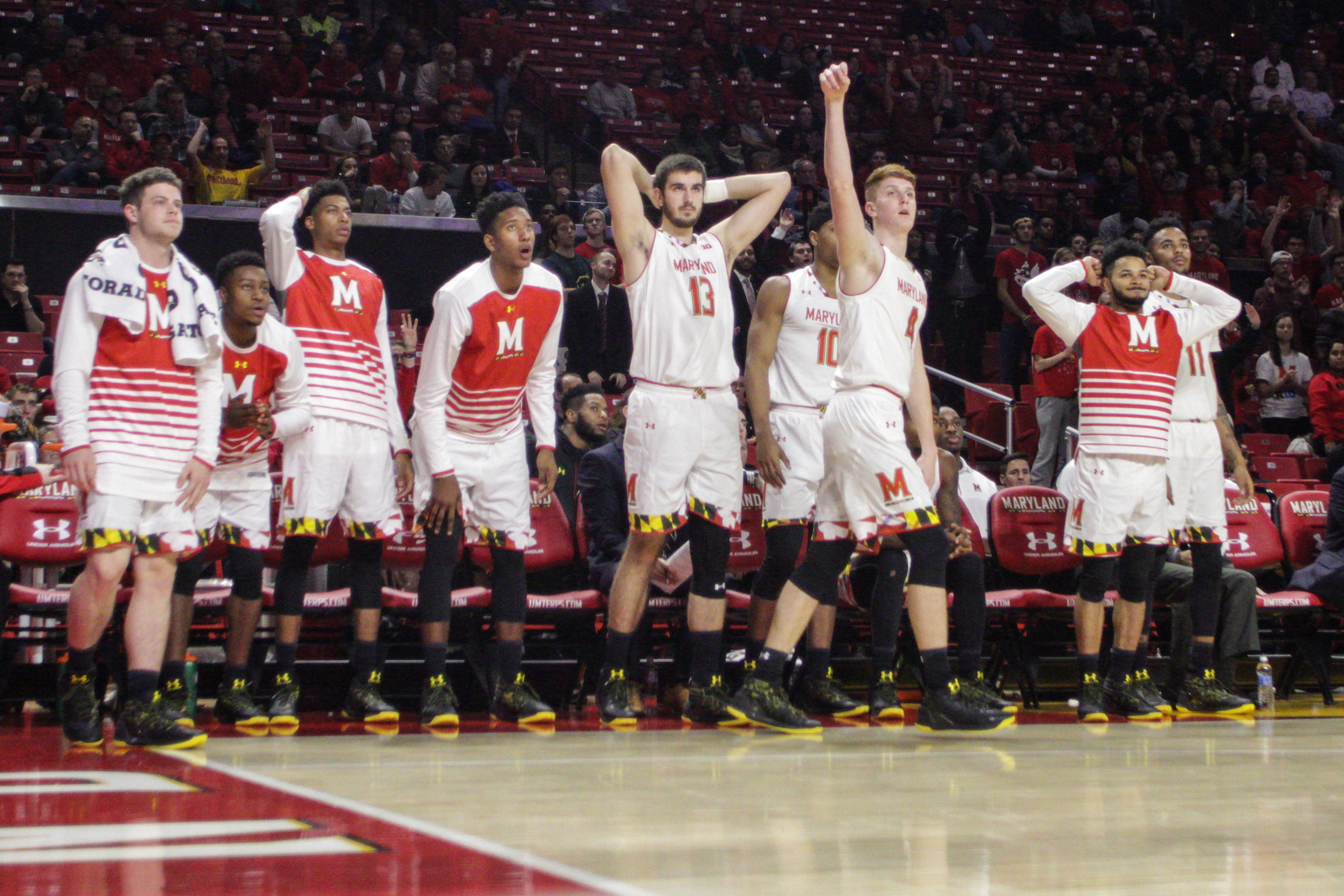Views expressed in opinion columns are the author’s own.
There’s something special about college basketball. I’m a senior now, and our final home game against Michigan State a few weeks ago was presumably my last-ever game as a student. In the waning seconds, as point-god Melo Trimble pushed the ball up the floor and hit a long three to win the game, I watched the student section devolve into bedlam, an unintelligible mosh pit of shrieking and hugging. The catharsis of winning what was, all things considered, a not-very-important game, was sublime.
The NBA, however, doesn’t give me that feeling. When I watch an NBA game, I expect to be dazzled. I expect the 7-foot-tall über-athletic superheroes will defy gravity and hit contested threes. When I watch college ball, I expect Maryland’s favorite offensive set. Trimble or Anthony Cowan brings the ball up the floor, passes it to the wing, gets it back, tries the other wing, gets it back and clanks a long two. So when our players remind us they’re far from regular humans — when Damonte Dodd volleyball-spikes an opposing shot into the moon, or Kevin Huerter pulls out a reverse jam in transition — it’s all the more mind-melting.
March Madness is appropriately named. Each year, 64 teams of idealistic 20-somethings try not to fall over on national television. The lesser-known schools (Iona? East Tennessee State? Southwestern North Dakota Tech? Only one of those is made up) get to try to play Cinderella. The perennial powerhouses try not to slip up so their coaches, preening and screening on the sidelines, don’t have aneurysms. Countless Americans try to play Nostradamus in their office pools and do their best to remember if they picked Florida Gulf Coast University or the South Texas University of Miami (again, only one is made up). The whole process is mad — and perfect.
Reality has very little to do with it. The NCAA estimates that 1.1 percent of men’s college basketball players get drafted into the NBA. The vast majority of players won’t ever step onto a court again after their college eligibility expires. As of 2013, the tournament generated more than $1 billion in ad revenue, of which players see not even a penny. Even the Cinderella narrative is overblown — I was born in 1995, and since then, a team seeded lower than three has won the tournament exactly twice.
None of that really matters though. The magic of college basketball is that every game is an opportunity to shriek, hug strangers and hurl abuse at referees and the opposition. The recent fad at Maryland games is creating projectiles out of the newspapers we’re given. Every bucket triggers a rain of paper and disapproving looks from security. The whole experience is freeing and cathartic. Perhaps the system takes advantage of student athletes, and perhaps Americans care a bit too much about the tournament. But it’s the zenith of the college experience. I’m reminded of Lewis Carroll’s Cheshire Cat — certainly, when it comes to basketball, we’re all mad here.
Jack Siglin is a senior physiology and neurobiology major. He can be reached at jsiglindbk@gmail.com.



